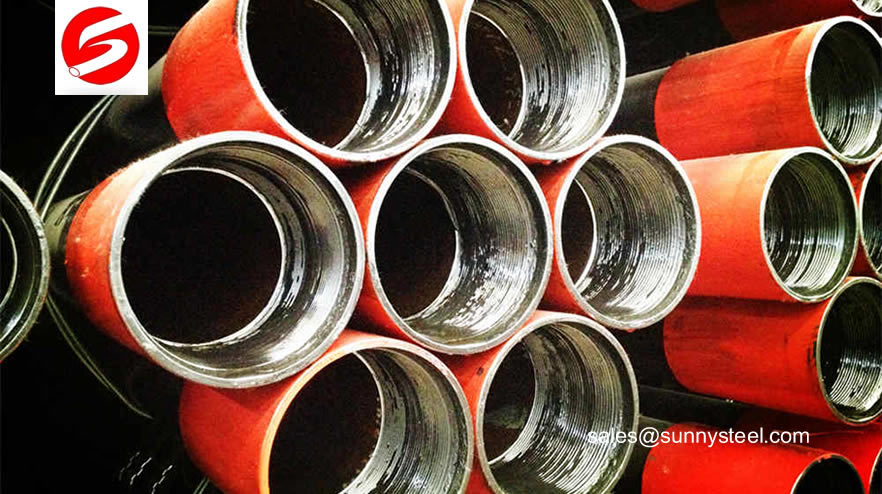AWWA Flange Standards differ from ANSI (American National Standards Institute) and ASME (American Society of Mechanical Engineers) certifications in a variety of ways, the most important being their specificity: AWWA standards evaluate properties that particularly affect potable water use, as opposed to broader industrial flange applications
AWWA Flange Charts and Drawings
These tolerances are a part of ANSI B16.5 and AWWA C207-01 Sec. 4.2 except where noted otherwise.
- AWWA Class B-Ring and Blind Flanges
- AWWA Class B-Hub and Blind Flanges
- AWWA Class D-Ring and Blind Flanges
- AWWA Class D-Hub and Blind Flanges
- AWWA Class E-Ring and Blind Flanges
- AWWA Class E-Hub and Blind Flanges
- AWWA Class F-Ring and Blind Flanges
General Information
American Water Works Association (AWWA) is an international non-profit, scientific and educational association founded to improve water quality and supply. Established in 1881, it has a membership (as of 2012) of around 50,000 members worldwide.
- Full Face Gasket: covers the full face of the flange. Generally used on flat face flanges
- Flat ring Gasket: covers only the sealing surface or the raised face of the flange.
- Metallic Ring Gakset: designed to be fitted in RTJ Flanges.
Listed below are the Dimensional Tolerances to which flanges are manufactured. The limits given are maximum.
| Ring type Slip-on and Blind flanges | HUB type slip-on | ||||
| O.D. | <=24" | +/- 0.6"(1.6mm) | O.D. | <=24" | +/- 0.6"(1.6mm) |
| >24" | +/- .12"(3.2mm) | >24" | +/- .12"(3.2mm) | ||
| I.D. | Socket-Welding | 10" and Samller +.03"(0.8mm),-0" | I.D. | 10" and Samller | +.03"(0.8mm) |
| Slip-on and Lap Joint | 12" and Larger +.06"(1.6mm),-0" | 12"-18" | +/-.06"(1.6mm) | ||
| 20"-42" | +.12"(3.2mm) +.06"(1.6mm) | ||||
| O.D. of Hub | <=12" | +.09"(2.4mm), -.06"(1.6mm) | Diameter of Contact Face | 0.06" Raised Face | +/-.03"(0.8mm) |
| 14"-42" | +/-.12"(3.2mm) | ||||
| Diameter of Contact face | 0.06" Raised Face | +/- .03"(0.8mm) | Diameter of Hub at base | X<=24" | +/-.06"(1.6mm) |
| X>24" | +/-.12"(3.2mm) | ||||
| Deameter of Contact face | <=10" | +.03"(0.8mm), -0" | Diameter of Hub at point of Welding | <=5" | +.09"(2.4mm), -.03"(0.8mm) |
| 12"-42" | +.06"(1.6mm), -0" | >=6" | +.16"(4.0mm), -.03"(0.8mm) | ||
| Drilling | Bolt Circle | 1/2"-24" /26"-42" | Drilling | Bolt Circle | 1/2"-24" /26"-42" |
| +/-.06"(1.6mm) +/-.06" | +/-.06"(1.6mm) +/-.06" | ||||
| Bolt hole spacing | +/-.03"(0.8mm) | Bolt hole spacing | +/-.03"(0.8mm) | ||
| Eccentricity of Bolt circle with respect to bore | .03" Max. (0.8mm) | Eccentricity of Bolt circle with respect to bore | .03" Max. (0.8mm) | ||
| Thickness | 18"& Small | +.12"(3.2mm),-0" | Thickness | 18"& Small | +.12"(3.2mm),-0" |
| 20"-42" | +.19"(1.6mm) | 20"-42" | +.19"(1.6mm) | ||
| Length Thru Hub | <=10" | +/-.06"(1.6mm) | Length Thru Hub | <=10" | +/-.06"(1.6mm) |
| 12"-42" | +/1.12"(3.2mm) | 12"-42" | +/1.12"(3.2mm) | ||
Rigid inspection procedure assures the maintenance of high standards of accuracy in regular day to day production.
AWWA Vs. ANSI Flange Standards
Both the AWWA and ANSI have thorough standards for flanges, and the two standards are different in several ways. AWWA standards provide flange properties intended for potable water use only. In contrast, ANSI standards are aimed at industrial flange applications.
Both the AWWA and ANSI have thorough standards for flanges, and the two standards are different in several ways. AWWA standards provide flange properties intended for potable water use only. In contrast, ANSI standards are aimed at industrial flange applications.
For example, AWWA flange ratings are applicable only at atmospheric temperature, while ANSI ratings cover flange installations from -20°F to 1500°F. AWWA standards provide flange properties intended for potable water use only. In contrast, ANSI standards are aimed at industrial flange applications. For example, AWWA flange ratings are applicable only at atmospheric temperature, while ANSI ratings cover flange installations from -20°F to 1500°F.
ANSI covers numbered class flanges from 150 to 2500, and AWWA standards encompass lettered flange classes B, E, F, and the commonly used class D connection. AWWA provides ratings for a much broader range of nominal pipe sizes (3″-144″) than ANSI provides (1/2″-24″).
Finally, ANSI and AWWA flange standards differ in the breadth of applications discussed. ANSI includes information for welded auxiliary connections and tapping, while AWWA does not address those installations. Also, the AWWA standard only encompasses ring, hub type, blind flanges, and threaded iron flanges while the ANSI standard inlcudes all flange types.
This discussion on AWWA flange standards and ANSI flange standards is based on information from ANSI/AWWA C115/A21.15-99: “American National Standard for Flanged Ductile-Iron Pipe with Ductile-Iron or Gray-Iron Threaded Flanges”, ANSI/AWWA C207-94: “AWWA Standard for Steel Pipe Flanges for Waterworks Service-Sizes 4 In. Through 144 In.”, and ANSI B16.5-1981: “Pipe Flanges and Flanged Fittings”.
Note:
- Ring flanges available overbored or counterbored per customer specification.
- Bolt holes shall be drilled 1/8th inch larger in diameter than the nominal diameter of the bolt, except for flanges larger than 84 inch in diameter which shall be drilled 3/16th inch larger than the nominal diameter of the bolt.
- Drilling same as ANSI/ASME B16.1 125 lb and B16.5 150 lb pattern.
- Flanges available overdrilled to accommodate insulators.
- AWWA recommends the use of dished head assemblies as alternate to blind flanges, sizes over 72" nominal.
- AWWA C207-01 Class B and D Hub Flanges are identical to Industry Standard Class 125 Light Weight Flanges.













Comments